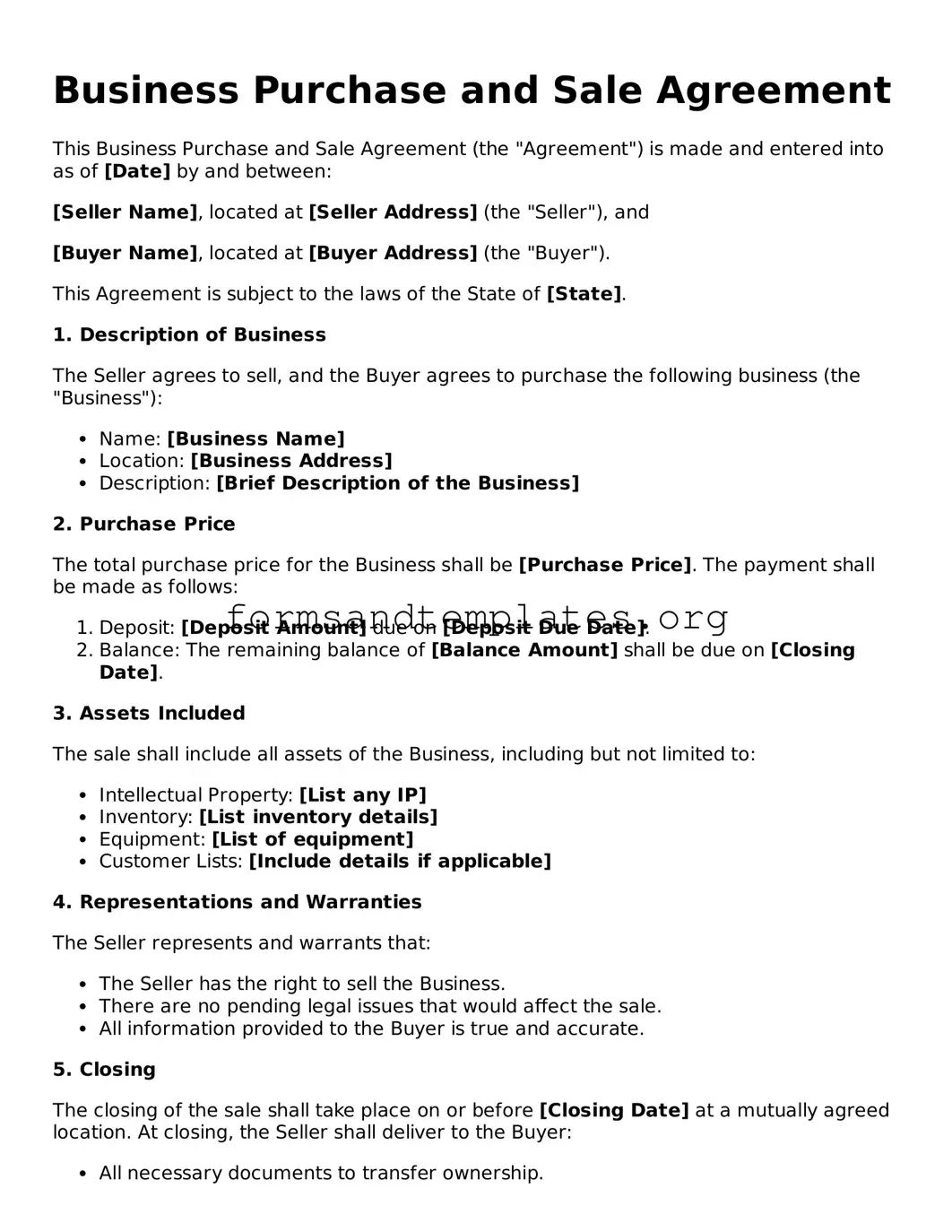Business Purchase and Sale Agreement
This Business Purchase and Sale Agreement (the "Agreement") is made and entered into as of [Date] by and between:
[Seller Name], located at [Seller Address] (the "Seller"), and
[Buyer Name], located at [Buyer Address] (the "Buyer").
This Agreement is subject to the laws of the State of [State].
1. Description of Business
The Seller agrees to sell, and the Buyer agrees to purchase the following business (the "Business"):
- Name: [Business Name]
- Location: [Business Address]
- Description: [Brief Description of the Business]
2. Purchase Price
The total purchase price for the Business shall be [Purchase Price]. The payment shall be made as follows:
- Deposit: [Deposit Amount] due on [Deposit Due Date].
- Balance: The remaining balance of [Balance Amount] shall be due on [Closing Date].
3. Assets Included
The sale shall include all assets of the Business, including but not limited to:
- Intellectual Property: [List any IP]
- Inventory: [List inventory details]
- Equipment: [List of equipment]
- Customer Lists: [Include details if applicable]
4. Representations and Warranties
The Seller represents and warrants that:
- The Seller has the right to sell the Business.
- There are no pending legal issues that would affect the sale.
- All information provided to the Buyer is true and accurate.
5. Closing
The closing of the sale shall take place on or before [Closing Date] at a mutually agreed location. At closing, the Seller shall deliver to the Buyer:
- All necessary documents to transfer ownership.
- Keys and access codes to the Business premises.
6. Governing Law
This Agreement shall be governed by and construed in accordance with the laws of the State of [State].
IN WITNESS WHEREOF, the parties have executed this Agreement as of the day and year first above written.
______________________________
[Seller Name]
______________________________
[Buyer Name]
